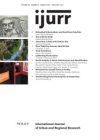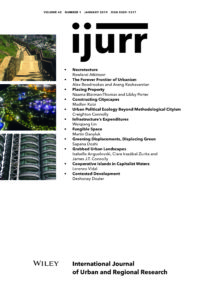Cities confronted with unsustainable development and climatic changes are increasingly turning to green infrastructure as an approach for growth and climate risk management. In this context, recent scholarly attention has been paid to gentrification, real‐estate speculation and resident displacement in the context of sustainability and green planning in the global North. Yet we know little about the environmental‐justice implications of green infrastructure planning in the context of self‐built settlements of the global South. To what extent do green infrastructure interventions produce or exacerbate urban socio‐spatial inequities in self‐built settlements? Through the analysis of a greenbelt project, an emblematic case of green infrastructure planning in Medellín, we argue that, as the Municipality of Medellín is containing and beautifying low‐income neighborhoods through grabbing part of their territories and turning them into green landscapes of privilege and pleasure, communities are becoming dispossessed of their greatest assets—location, land and social capital. In the process, community land is transformed into a new form of aesthetically controlled and ordered nature for the middle and upper classes and for tourists. By contrast, communities’ planning alternatives reveal how green planning can better address growth and climate risks in tandem with equitable community development.
Details
Written by:
Isabelle Anguelovski, Clara Irazábal‐Zurita & James J.T. Connolly
Digital Object Identifier (DOI)
10.1111/1468-2427.12725
About DOI

